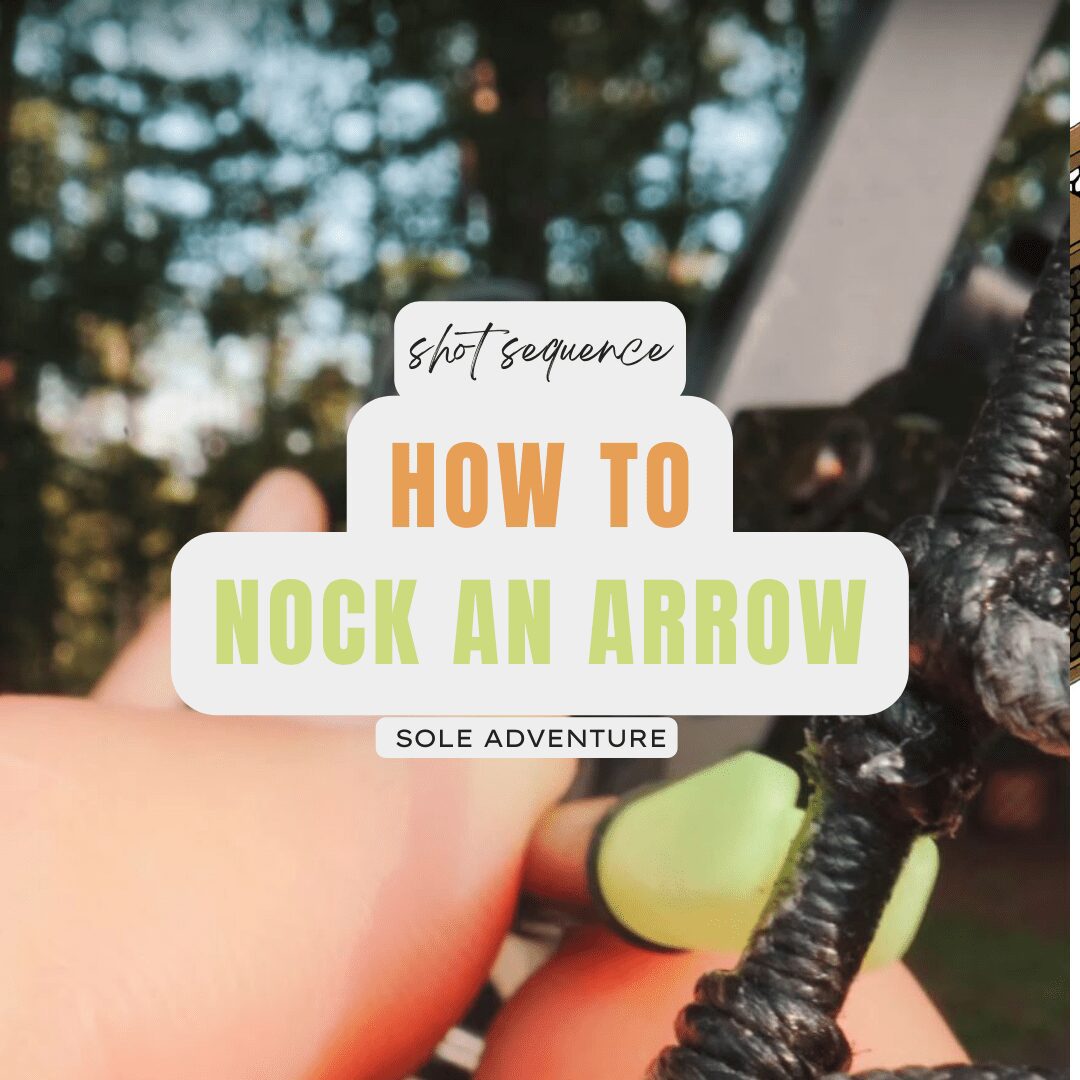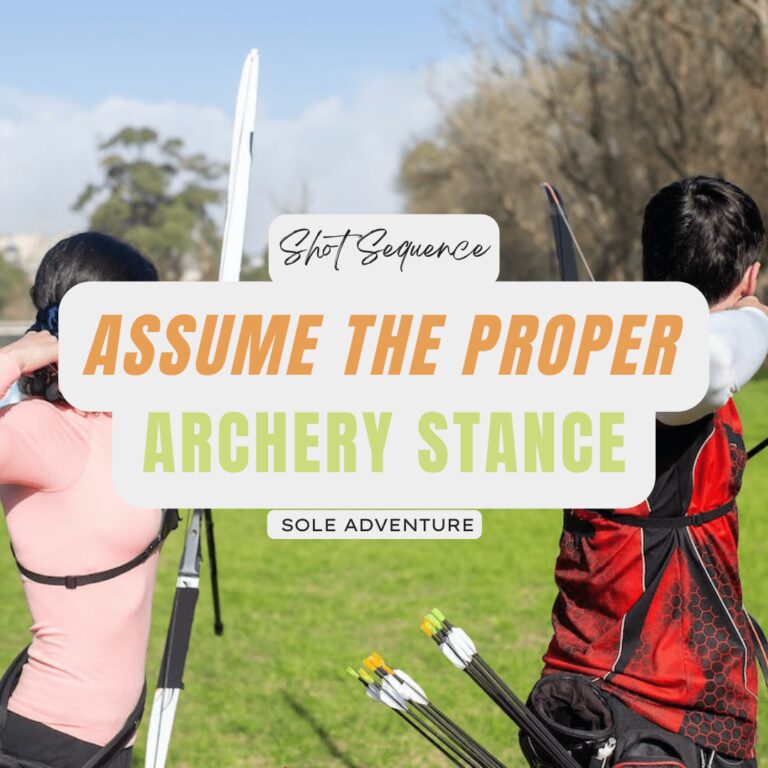Nocking your arrows on the bowstring is an integral part of archery, and if you don't do it correctly, you'll have a more challenging time shooting accurately.
In this article, you will learn how to nock the arrow – the second step of the basic shot sequence.
Furthermore, you will also learn how to check for signs that might indicate your equipment needs a tune-up and make any necessary adjustments.
Some people mind find the process of nocking an arrow elementary. However, many beginner (also some more experienced) archers struggle with this seemingly basic process, so don't feel too bad if it's something that eludes you.
For top-tier archers and competitive shooters, this is a critical step that makes all the difference. They always do this before every shot by making it part of their routine, which makes them more aware of any change in the equipment that could affect arrow flight.
Contents
Nocking an arrow - What does it mean?
Attaching the arrow to the bowstring requires a process named nocking.
When "nocking," we also check those arrow index vanes or feathers are orientated on the bowstring for proper clearance as the arrow passes over the riser.
Looking closely at the placement of the nock on the bowstring in relation to the D-loop or the nock set is also part of the "nocking" process.
Read on.
Some "nocking" terminology
I'll use this terminology often through the "shot sequence steps," so if you're already familiar with these terms, feel free to skip this section.
Serving: Serving is the wire that wraps around the string to avoid wear. It protects all string parts that may touch the bow or the archer.
Nocking points: The nocking points are spots on the serving that are used so you can have consistency with how you place your arrows. Some bows have two of them, but sometimes, there's only one, and it is called a nock locator.
The nock: The nock is the small piece of plastic at the end of the arrow that connects it to the string.
Shelf: The Self is a long flat surface in the cutout of your bow. Almost all bows have this feature, except for longbows, Mongolian bows, and some traditional bows.
Arrow rest: Recurve and compound bows have an arrow rest above the shelf. It is where you place the arrow before you shoot it. When you shoot a traditional bow, the arrow goes directly over the bow's "shelf."
How to nock an arrow
A bow's nocking point is the place on the string where you want your arrows to attach. Nocking points are adjusted differently depending on the bow's design, so it's best to consult a professional for advice.
Now that your stance is perfected, you are ready to master the second step of "the shot sequence"… Nocking an arrow
Now that you have been properly introduced to the terminology, it's time to start with the arrow. You can see three groupings of feathers (or plastic vanes, called fletching), and one of them is unique in color. This is called the "index feather" or "index vane." Grab one!
- Ensure the bow points towards the ground and that your bow limbs are vertical. If you do this, you will avoid any unwanted accidental launches.
- Ensure that the arrow is on its arrow rest, with the index feather pointing away from the bow if you're using a recurve or pointing up if you're using a compound bow.
If you're curious about the difference between which way the arrow vane is pointing, I will explain that in my upcoming "How to Choose an Arrow" post. Many parts of archery are tricky to figure out, and arrows are just one of them.
- It's time to put the nock of your arrow over the bowstring. With a satisfying click, attach it there. Feels great when it's done right! You may not always be able to hear the click from your bow, but you should always be able to feel it when it's being secured onto the string.
- To properly shoot a bow, the arrow needs to be firmly attached. If it isn't correctly nocked, it could dry fire or cause your bow to malfunction.
That's it! You did it. You nocked an arrow correctly.
Four tips to safely nock an arrow
Tip #1
Always be careful when shooting at a range. If you drop an arrow while nocking it, don't stress about it; leave it where it is, and continue with your shooting session.
Most ranges have fixed rules about dropped arrows; if you've got a bunch of people at the shooting line and an arrow falls out of your hands or an arrow falls to the ground in front of you, don't touch it.
When an arrow has just fallen RIGHT ONTO the line, don't bend over to pick it up; leave it there.
You can call for a staff member to pick it up for you. It's a measure to ensure your safety, and most ranges enforce the rule, so remember it.
Tip #2
If you're ever in doubt - talk to the experts. If you're wondering how to hold that arrow, or need some help with other basics in archery, head up to the counter and ask an experienced employee. They'll happily show you the ropes and get you on your feet.
Tip #3
Keep an eye on the string in the middle. If there's extra material, it may fray or tatter over time. If it happens, it's time to replace the bowstring.
Tip #4
Always check the nock at the end of your arrow. It may seem obvious, but I'll repeat the point: it's crucial to ensure the piece at the end where your arrow gets attached is always in good condition and isn't broken.
Modern arrow manufacturers have come a long way in creating very strong nocks, but sometimes the nocks get damaged if you reuse your arrows a lot.
When you're getting ready to shoot an arrow, it's essential to examine the nock for any damage. If there is any, it can affect the release of the arrow and cause dry firing. Always check that all aspects of your bow are functioning before firing an arrow.
Can I place the arrow on the arrow rest instead of the shelf?
Many archers tell you to put the arrow on the rest before aiming, but I feel this is more difficult. The arrow often flips off the rest while you're trying to hook it when aiming.
What to do if my nock isn't properly indexed?
Always ensure your nock is correctly indexing before you shoot, as this will prevent clearance issues. To adjust it, all you need to do is turn the nock in whichever direction is appropriate for the type of nock you use.
How to nock an arrow using a clicker?
Nocking an arrow using a clicker can be more difficult. The easiest way to do it is by placing it under the clicker at the beginning. But you can also do it after attaching the arrow. Whatever suits you best.
How to detect and solve fitting issues?
It's important to set your nock tight enough so that it doesn't fall down but not so tightly that it requires a lot of power to attach it to the string. A loose-fitting nock can be detected if the arrow slides down if you point the bow to the ground.
Are nocking points needed?
Believe it or not, it's important to at least have the upper nocking point. Without one, you won't be able to consistently place the arrow on the same spot on the string.


